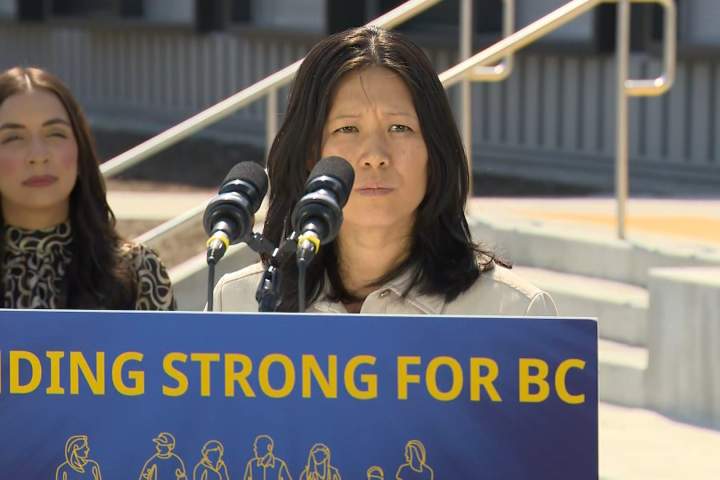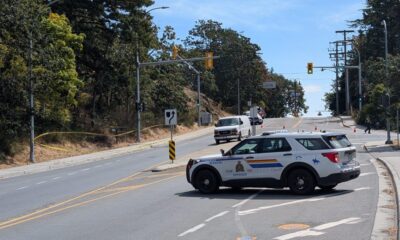Education
B.C. Government Addresses Surrey’s School Space Crisis with New Seats

The British Columbia government is taking steps to address the growing demand for school facilities in Surrey as students prepare to return to the classroom. Surrey, the province’s largest school district, reported an enrolment increase to over 83,000 students last year, up by 1,500 from the previous year. In response to this surge, the district has employed various strategies to accommodate its students, including changes in school scheduling and the introduction of remote learning options.
As part of its efforts, the B.C. government announced the addition of 700 new student seats in Surrey, which includes 400 new seats at Woodland Park Elementary, along with 100 seats each at Walnut Road Elementary and Theresa Clarke Elementary. Infrastructure Minister Bowinn Ma highlighted that another 2,300 seats are in development, with most expected to be operational by winter 2026 and fall 2027.
The rapid population growth in the province has created significant challenges for school construction. Ma noted that British Columbia’s population increased by 200,000 residents between 2023 and 2024, necessitating the creation of 51 new classrooms for every 10,000 new residents. Addressing concerns over the pace of school construction, Ma stated, “I challenge anyone to find a jurisdiction aside from maybe China that could build that quickly.”
The introduction of modular construction has been a key strategy for the government. For example, the Woodland Park addition was completed in just 18 months, showcasing the efficiency of this approach. “These can be delivered in half the time at half the cost,” Ma added, indicating that innovative solutions are essential in meeting the urgent demand for educational facilities.
Despite these measures, schools across Surrey are still grappling with significant challenges, including a $16 million budget shortfall for the 2025-2026 school year. This financial strain has resulted in the closure of alternative learning programs and the discontinuation of the Grade 7 band program. Furthermore, the district has struggled to fund additional portable classrooms, as these expenses must be covered by its operating budget, which is primarily allocated for staff and educational programming.
Chair of the Surrey Board of Education, Gary Tymoschuk, acknowledged the pressing need for more classroom space. He reassured parents regarding the hybrid learning model, which he believes will prepare students for a future that increasingly relies on remote and hybrid educational tools. “We are hearing from some parents that they are actually grateful that we are going down this path because they want their children to learn how to effectively use tools like Zoom and MS Teams,” Tymoschuk stated.
Although the hybrid classes aim to alleviate space constraints, concerns remain among parents. President of the Surrey District Parent Advisory Council, Anne Whitmore, expressed her satisfaction with the increase in classroom space but pointed out that adding more students to existing schools often leads to reduced central resources. “There’s no increased gym space, resource room, office administration, or learning center, and all of those things are essential to the school community,” she said.
Whitmore also noted that the actual net gain in new seats is likely less than what the government has announced. She emphasized that of the 40 modular classrooms provided, 19 were replacements for existing portables. “So when the ministry talks about 40 new classrooms or multiply that by 25, you know, that many new seats, they actually are not new seats,” she explained.
Since the NDP government took office, it has invested $1 billion to create 16,000 new student spaces in Surrey. Minister Ma expressed hope that new federal caps on immigration will help stabilize the province’s population growth, allowing the government to catch up with the necessary infrastructure developments.
As Surrey navigates these complex challenges, the government’s commitment to expanding educational facilities remains critical in ensuring that every student has access to quality learning environments. The situation continues to evolve as stakeholders work together to address the needs of a rapidly growing student population.
-

 Science2 months ago
Science2 months agoToyoake City Proposes Daily Two-Hour Smartphone Use Limit
-

 Health2 months ago
Health2 months agoB.C. Review Reveals Urgent Need for Rare-Disease Drug Reforms
-

 Top Stories2 months ago
Top Stories2 months agoPedestrian Fatally Injured in Esquimalt Collision on August 14
-

 Technology2 months ago
Technology2 months agoDark Adventure Game “Bye Sweet Carole” Set for October Release
-

 World2 months ago
World2 months agoJimmy Lai’s Defense Challenges Charges Under National Security Law
-

 Technology2 months ago
Technology2 months agoKonami Revives Iconic Metal Gear Solid Delta Ahead of Release
-

 Technology2 months ago
Technology2 months agoSnapmaker U1 Color 3D Printer Redefines Speed and Sustainability
-

 Technology2 months ago
Technology2 months agoAION Folding Knife: Redefining EDC Design with Premium Materials
-

 Technology2 months ago
Technology2 months agoSolve Today’s Wordle Challenge: Hints and Answer for August 19
-

 Business2 months ago
Business2 months agoGordon Murray Automotive Unveils S1 LM and Le Mans GTR at Monterey
-

 Lifestyle2 months ago
Lifestyle2 months agoVictoria’s Pop-Up Shop Shines Light on B.C.’s Wolf Cull
-

 Technology2 months ago
Technology2 months agoApple Expands Self-Service Repair Program to Canada









